Flamethrower tank Pz.Kpfw.II (F) Flamingo (Germany)
The decision to create the first flamethrower tank was made by the German command in early 1939. At the end of February, the army demanded that industry develop a modification of the existing Pz.Kpfw.II light tank with flamethrower weapons. The task to create such a machine was received by MAN and Daimler-Benz, which by this time had mastered the serial construction of the base machine. The initial plans included the assembly of a prototype with its subsequent testing, as well as the construction of an installation series of 90 machines.
The Pz.Kpfw.II tank of the Ausf.D modification was chosen as the basis for the new combat vehicle. To install new weapons, it was necessary to slightly modify the body of the base vehicle, as well as change the composition of the main units. In particular, it required the installation of a new turret with small arms and some rearrangement of the fighting compartment. At the same time, the bulk of components and assemblies could be used without any changes, which should have ensured the relative simplicity and cheapness of mass production.
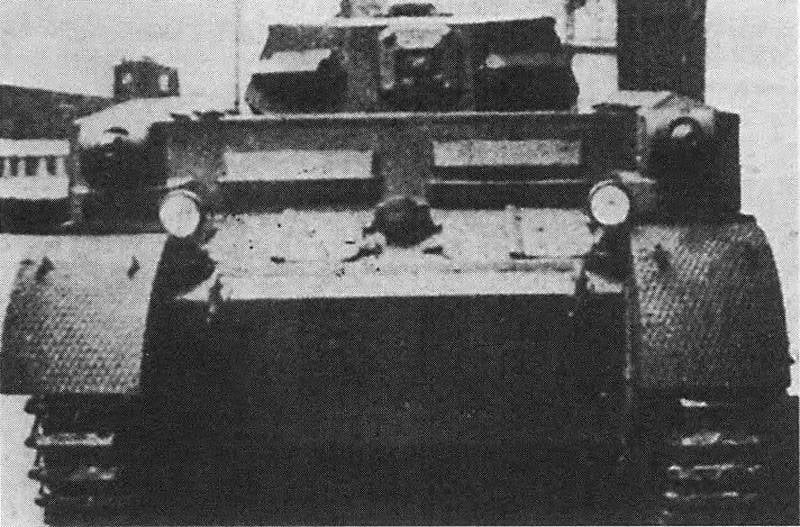
Flamethrower tank Pz.Kpfw.II (F). Photo of Chamberlain P., Doyle H. "Complete reference book of German tanks and self-propelled guns of the Second World War"
As part of the Pz.Kpfw.II (F) project, it was decided to keep the existing armored hull of a serial light tank, although it was planned to make some noticeable changes to its design. Improvements should have touched on individual parts of the front and the internal volumes of the fighting compartment. In addition, it was planned to install some additional parts on the outer surface of the machine.
The frontal part of the hull was formed by several sheets of different sizes with a thickness of 30 mm. There was a bottom sheet tilted forward, a middle sheet littered back, and a vertical top sheet. The latter provided hatches for monitoring the road. The central part of the body has been modified. The sides of the original hull were divided into two parts, while special boxes were now mounted instead of the top sheets. Due to this, two fender niches appeared on the sides of the fighting compartment, designed to install new equipment. The shape and dimensions of the aft hull remained unchanged. The side and aft projection of the machine had to be covered with 20-mm sheets. The roof and bottom received a thickness of 10 mm.
The overall layout of the tank "Flamingo" did not differ from the base machine. In the frontal part of the body there was a compartment with transmission units, behind which there was a control compartment. The turret and the fighting compartment were located in the center of the hull, feed was allocated for the engine, fuel tanks, radiators, etc.
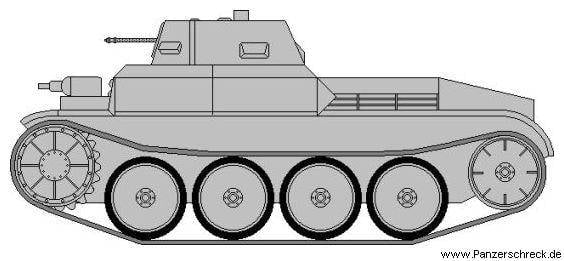
Side view of the car. Figure Aviarmor.net
Being a development of the Pz.Kpfw.II Ausf.D vehicle, the flamethrower tank had to retain the existing power plant and transmission. A 62 hp Maybach HL 140TRM carburetor engine was to be installed in the stern of the hull. or Maybach HL 66P with 180 hp. with water cooling system. With the help of a cardan shaft, the engine had to be connected to the front transmission compartment. Mechanical transmission transmitted torque to the front drive wheels. There was a choice of one of seven forward gears and three reverse gears.
The base tank Pz.Kpfw.II had a running gear based on four large-diameter double road wheels on each side. The rollers were equipped with an individual torsion bar suspension. The drive wheels were located in the front of the hull, the guides were in the stern. As part of the "D" project, a new track design was developed, on the basis of which the machine's caterpillar was built.
During the development of the flamethrower tank, a list of improvements to the original vehicle was formed. Thus, the new Flammpanzer II project implied the abandonment of the existing turret. Instead, a combat module of a different design was to be mounted on the pursuit of the roof of the hull. A design was proposed with a narrow frontal sheet, two zygomatic sheets and two parts, which were both sides and stern. A machine-gun mount was provided in the front sheet, and viewing devices in other details. From above, the gunner had to hide behind a horizontal roof. The tower was protected from attacks from the front with 30 mm armor, and the stern had a thickness of 14,5 mm.
The tower of the new design, unlike the existing product, was supposed to carry only one MG 34 machine gun of 7,92 mm caliber. The customer and the authors of the project considered that such a reduction in machine-gun armament in comparison with the base vehicle was justified and could be compensated for by the presence of a flamethrower system. In fact, the machine gun was considered as an auxiliary weapon for self-defense. Machine gun ammunition consisted of 1800 rounds.
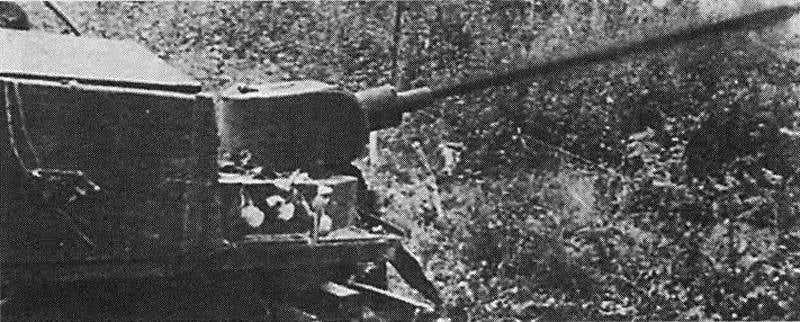
Release of fire mixture without ignition. Photo of Chamberlain P., Doyle H. "Complete reference book of German tanks and self-propelled guns of the Second World War"
In front of both fenders, special boxes appeared with mounting systems for flamethrower hoses. The latter were miniature armored steel towers with the ability to point horizontally and vertically. With the help of remote control from the operator's workplace, the hoses could turn within sectors 180 ° wide. There was also the possibility of vertical aiming. The exhaust pipes were equipped with acetylene torches.
Inside the armored corps, in fender niches and other volumes of the fighting compartment, various elements of two flamethrower systems were placed. The composition of such weapons included two tanks for fire mixture of 160 liters each, as well as four cylinders for compressed nitrogen. As an "ammunition" it was proposed to use a mixture of gasoline and oil in a certain proportion. The release of the fire mixture to the target was to be carried out by supplying compressed gas to the cylinder with it. Taking off under the pressure of compressed gas from the outlet pipe of the hose, the fire mixture had to come into contact with an acetylene torch and ignite. Burning drops of fire mixture of different sizes flew to the target.
In some of the surviving photographs of the Flammpanzer II flamethrower tank, it can be seen that the vehicle could carry additional weapons in the form of smoke grenade launchers. These funds were located in three units on stationary inclined supports along the sides of the aft hull. Installations were fixed on the fences behind the expanded part of the armored hull.
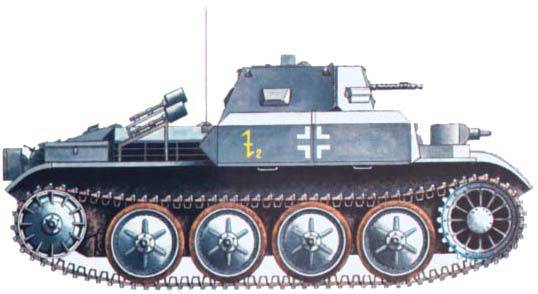
Coloring option serial machine. Figure Achtungpanzer.com
The crew of the tank Pz.Kpfw.II (F) was supposed to consist of three people. In front of the hull, in the control compartment, there were jobs for the driver (on the left) and the flamethrower gunner (on the right). There was a shooter in the single tower. According to other sources, a radio operator was supposed to be next to the driver, and the flamethrowers were controlled from the fighting compartment, from the workplace in the tower. To access the inside of the car on the roof of the hull and in the roof of the tower there was a set of hatches. Observation of the situation was to be carried out through viewing devices in the frontal sheet of the hull and similar tower systems.
Modifications to the basic light tank did not lead to a change in dimensions. The length of the flamethrower armored vehicle was 4,9 m, width 2,4 m, height - 1,85 m. At the same time, the combat weight increased to 12 tons. One of the main reasons for the increase in the weight of the vehicle was the use of fire mixture tanks and nitrogen cylinders that needed armor protection. Despite the increase in the mass of the machine, the specific power remained at an acceptable level - up to 15 hp. per ton. This allowed the Pz.Kpfw.II (F) tank to reach speeds of up to 55 km/h on the highway.
The design of the first German flamethrower tank was completed in the early summer of the 1939 of the year. In July, an experimental machine was assembled at one of the factories, the body of which, for reasons of economy, was made of non-armored steel. Such a prototype Pz.Kpfw.II (F) was used in field tests, the purpose of which, first of all, was to check the new weapon.
During the tests, the characteristics of the used flamethrowers were confirmed. The design of rotary hoses made it possible to attack targets within the entire front hemisphere at ranges up to 25 m. 2 liters of the mixture for each of the two flamethrowers were consumed per shot, so a tank with full tanks could fire 80 shots. In theory, this was enough to effectively destroy manpower and some enemy fortifications.
Even before the end of the tests, in the spring of 1939, MAN received an order for the construction of the first batch of a new type of chassis for assembling flamethrowing tanks. At the beginning of the next year, they were transferred to the Wegmann plant, where flamethrowers were installed. According to other sources, the assembly of serial equipment of the first batch began in May 1940. There is also information about the conversion of 30 production tanks Pz.Kpfw.II Ausf.D / E from the Wehrmacht fleet. As part of the fulfillment of the first order, by October 40, 87 flamethrower tanks were delivered. Three more cars were handed over only at the beginning of next year.
In the future, the production of equipment continued under a new contract signed in the spring of 1940. The production of Flamingo flamethrower tanks was carried out both from scratch and by altering serial tanks of the corresponding model. The last batch of such equipment, according to some reports, was handed over to the customer in the spring of 1942. By this time, 112 flamethrower tanks had been built. Another 43 vehicles were rebuilt from light tanks.
Despite the relatively early start of design work, the Pz.Kpfw.II (F) tanks were only able to enter the war in the summer of 1941. By this time, armored vehicles with flamethrowers were consolidated into battalions as part of larger tank formations and were supposed to support other troops. It was assumed that flamethrowers would be able to significantly increase the effectiveness of the actions of the advancing troops, but in practice the situation turned out differently.
The light tank chassis had an insufficient level of protection. 30 mm armor could be hit by artillery pieces and, under certain conditions, even anti-tank guns. As a result, the anti-tank defense of the Red Army had the ability to hit the German Flamingo tanks long before they reached the effective firing range of the fire mixture. In this case, the Flammpanzer II crews could only defend themselves with a single machine gun, and this drastically reduced firepower and combat effectiveness.
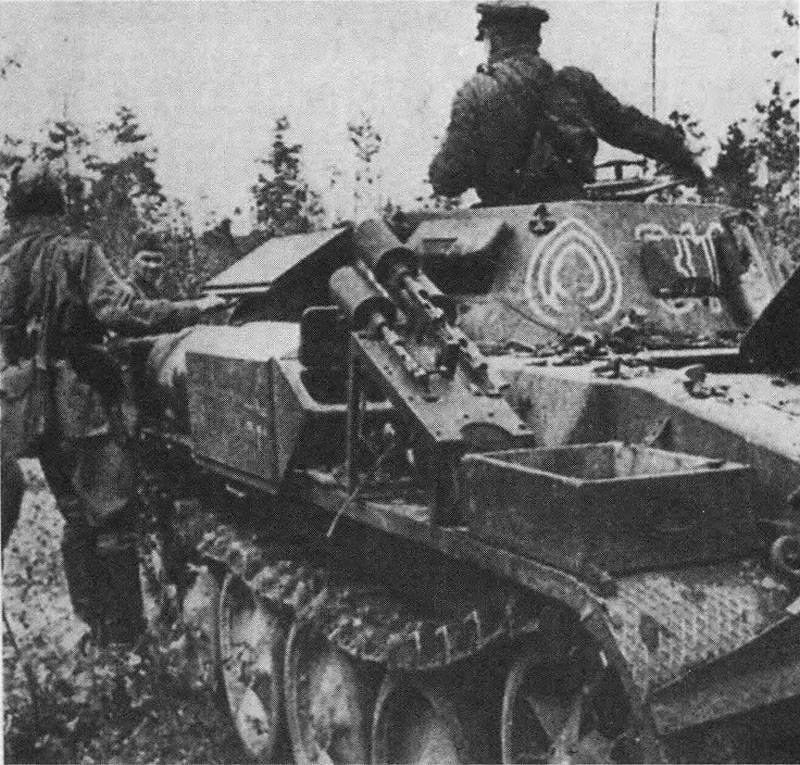
Red Army soldiers are studying the trophy flamethrower tank. Photo of Chamberlain P., Doyle H. "Complete reference book of German tanks and self-propelled guns of the Second World War"
According to reports, similar features of the first German flamethrower tank led to unacceptably high losses. A successful shot of artillery or artillery shooters led to the ignition of the fire mixture from the internal tank, followed by the guaranteed destruction of the tank. In addition, left much to be desired and the chances of the crew to survive in this situation.
At the beginning of 1942, it was decided to abandon the further operation of the Pz.Kpfw.II (F) due to the impossibility of effectively solving the assigned tasks without an unacceptably high risk. All tanks remaining in the troops were recalled to the rear for modernization. Most of the flamethrower tanks were converted into carriers of captured F-22 guns. In this capacity, unlike the original configuration, the machines were able to bring Germany some benefit.
For the beginning of 1939, when the terms of reference for the project were being formed, 30-mm armor and a fire mixture firing range of about 25-30 m were considered sufficient for advanced technology. However, the situation soon changed. The flamethrower tank was supposed to shoot farther and carry more powerful protection. In the future, German specialists made several other attempts to create a flamethrower tank that could survive on the battlefield and complete the task.
Based on:
http://achtungpanzer.com/
http://aviarmor.net/
http://tehnikapobedy.ru/
Chamberlain P., Doyle H. Complete reference book of German tanks and self-propelled guns of the Second World War. - M .: AST: Astrel, 2008.
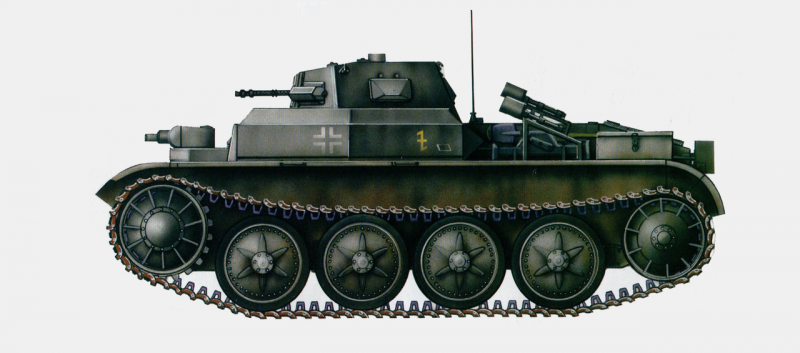
Information